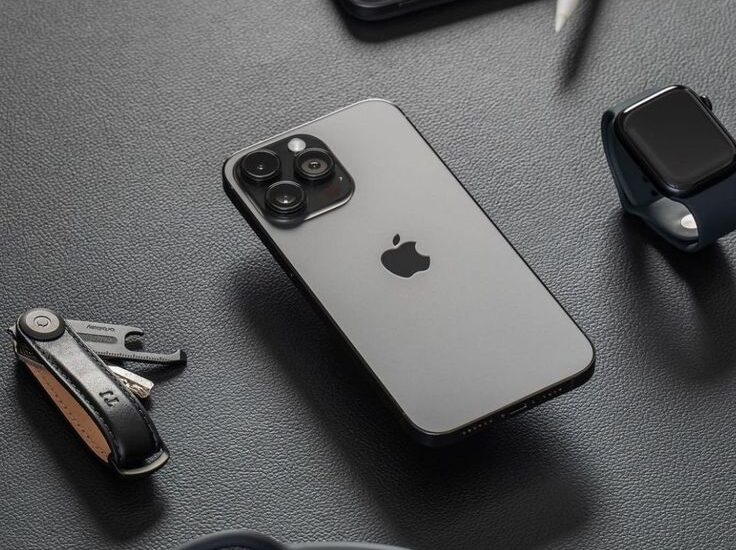Recycling your old phone is a responsible and eco-friendly choice that can help reduce electronic waste, conserve natural resources, and minimize pollution. However, before you hand over your device, it’s important to take the necessary steps to ensure that your personal data is secure and the phone is in the best condition possible for recycling. In this guide, we’ll walk you through the essential steps to prepare your phone for recycling, making the process smooth and secure.
1. Backup Your Data
Why It’s Important:
Your phone likely contains a wealth of personal information, including photos, videos, contacts, messages, and important documents. Backing up your data ensures that you don’t lose any valuable information when you recycle your phone.
How to Backup:
For iOS Devices:
1)Connect your iPhone to Wi-Fi.
2)Go to Settings > [Your Name] > iCloud Backup.
3)Tap Back Up Now.
4)Alternatively, you can use iTunes on a computer to back up your device.
For Android Devices:
1)Connect your Android phone to Wi-Fi.
2)Go to Settings > Google > Backup.
3)Ensure that Backup to Google Drive is turned on.
4)You can also use third-party backup apps or connect your phone to a computer to manually transfer files.
2. Sign Out of Accounts
Why It’s Important:
Signing out of your accounts helps prevent unauthorized access to your personal information and sensitive data.
How to Sign Out:
For iOS Devices:
Go to Settings > [Your Name].
Scroll down and tap Sign Out.
Confirm that you want to sign out.
For Android Devices:
Go to Settings > Accounts.
Select the account you want to remove.
Tap Remove Account.
3. Factory Reset Your Phone
Why It’s Important:
A factory reset erases all user data and restores your phone to its original state, ensuring that no personal information remains on the device.
How to Factory Reset:
For iOS Devices:
Go to Settings > General > Reset > Erase All Content and Settings.
Confirm that you want to erase all data.
For Android Devices:
Go to Settings > System > Reset options > Erase all data (factory reset).
Confirm that you want to reset your phone.
4. Remove SIM and SD Cards
Why It’s Important:
SIM and SD cards can store additional data and should be removed to prevent unauthorized access.
How to Remove:
SIM Card:
Use the SIM card ejector tool (or a paperclip) to open the SIM card tray.
Carefully remove the SIM card and store it in a safe place.
SD Card:
If your phone has an SD card slot, open the slot and remove the SD card.
Store the SD card in a safe place or use it in another device.
5. Verify the Erasure
Why It’s Important:
After performing a factory reset, it’s crucial to verify that all your data has been removed to ensure complete security.
How to Verify:
For iOS Devices:
Turn on your iPhone.
Check that the device asks you to set it up as a new phone, indicating that all data has been erased.
For Android Devices:
Turn on your Android phone.
Check that the device prompts you to set it up as a new device, indicating that all data has been erased.
6. Clean Your Phone
Why It’s Important:
Cleaning your phone ensures that it is in good condition and can be easily inspected by the recycling facility.
How to Clean:
Exterior:
Use a microfiber cloth to wipe down the screen and body of the phone.
Avoid using harsh chemicals or excessive water, as they can damage the device.
Charging Port and Headphone Jack:
Use a dry, soft brush or a can of compressed air to gently clean out any debris from the charging port and headphone jack.
7. Package Your Phone Properly
Why It’s Important:
Proper packaging protects your phone during transit and ensures it arrives at the recycling facility in good condition.
How to Package:
Box:
Use a sturdy box or envelope to package your phone.
Add padding material like bubble wrap or foam to protect the phone from impacts.
Label:
Clearly label the package with your name, address, and any required information for the recycling service.
If you are using a trade-in platform like Gbuyback.com, follow their specific packaging and labeling instructions.
8. Choose a Reliable Recycling Service
Why It’s Important:
Using a reputable recycling service ensures that your phone is handled responsibly and securely.
How to Choose:
Research:
Look for a recycling service that is certified by recognized environmental organizations.
Read reviews and testimonials from other users to ensure the service is reliable and trustworthy.
Gbuyback.com:
Visit Gbuyback.com to get a fair trade-in value for your device.
Use our secure and user-friendly platform to ensure your data is erased and your phone is recycled responsibly.
Conclusion
Preparing your phone for recycling is a straightforward process that ensures your personal data is secure and your device is in the best condition possible. By following these steps, you can confidently hand over your old phone and contribute to a more sustainable future. Ready to make a positive impact? Visit Gbuyback.com to trade in your old phone today and join us in our mission to promote responsible technology use and environmental stewardship.


